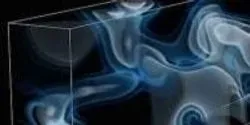Physics

These two infrared images of C/2013 (Comet Siding Spring) were taken by the Compact Reconnaissance Imaging Spectrometer for Mars (CRISM) aboard NASA’s Mars Reconnaissance Orbiter (MRO) on Oct. 19, 2014. Comet Siding Spring — an Oort Cloud comet that may contain material from the formation of the solar system some 4.6 billion years ago — was making its first voyage through the inner solar system. CRISM and many other instruments and spacecraft combined to provide an unprecedented data set for an Oort Cloud comet.

Using extremely faint light from galaxies 10.8-billion light years away, scientists have created one of the most complete, three-dimensional maps of a slice of the adolescent universe. The map shows a web of hydrogen gas that varies from low to high density at a time when the universe was made of a fraction of the dark matter we see today.

Astronomers using data from three of NASA's space telescopes — Hubble, Spitzer, and Kepler — have discovered clear skies and steamy water vapor on a gaseous planet outside our solar system. The planet is about the size of Neptune, making it the smallest for which molecules of any kind have been detected.

Researchers at Sandia National Laboratories’ Z machine have produced a significant output of fusion neutrons, using a method fully functioning for only little more than a year.

Magnetic reconnection in the Earth and sun's atmospheres can trigger geomagnetic storms that disrupt cell phone service, damage satellites and blackout power grids. Understanding how reconnection transforms magnetic energy into explosive particle energy has been a major unsolved problem in plasma astrophysics.

Future asteroid mining operations and how we deal with an impending strike could be influenced by research on a potential NASA mission that's being done by team that includes a University of Alabama in Huntsville (UAH) scientist.















